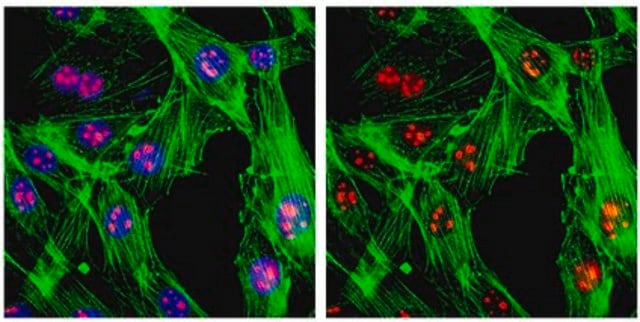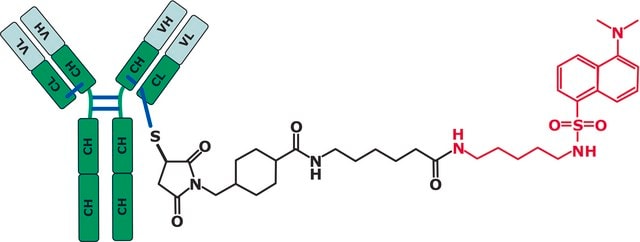AB2215
Anti-Interferon-β Antibody
serum, Chemicon®
Synonym(s):
Anti-IFB, Anti-IFF, Anti-IFN-beta, Anti-IFNB
About This Item
Recommended Products
biological source
rabbit
Quality Level
antibody form
serum
antibody product type
primary antibodies
clone
polyclonal
species reactivity
mouse
manufacturer/tradename
Chemicon®
technique(s)
ELISA: suitable
immunohistochemistry: suitable
immunoprecipitation (IP): suitable
neutralization: suitable
western blot: suitable
NCBI accession no.
UniProt accession no.
shipped in
dry ice
target post-translational modification
unmodified
Gene Information
mouse ... Ifnb1(15977)
Specificity
Immunogen
Application
Western blot (1:500) The antibody reacts with a 19kDa band coresponding to Mu-IFN-beta. Protocol below:
1. Put protein (approx 50ng) in blocking solution for 30-60 min RT
2. Add Primary antibody (1:500) to blocking solution
3. Agitate membrane for 60 min, RT
4. Wash 3X for 5min each with PBS-Tween
5. Add secondary antibody (1:1000) after diluting in PBS-Tween
6. Gentle agitation for 60min.
7. Wash 3X for 5min each with PBS-Tween
8. Develop with reaction kit of choice
Immunoprecipitation
Immunohistochemistry
ELISA
Optimal working dilutions must be determined by end user.
Inflammation & Immunology
Cytokines & Cytokine Receptors
Packaging
Physical form
Storage and Stability
Legal Information
Disclaimer
Not finding the right product?
Try our Product Selector Tool.
Storage Class
10 - Combustible liquids
wgk_germany
WGK 1
flash_point_f
Not applicable
flash_point_c
Not applicable
Certificates of Analysis (COA)
Search for Certificates of Analysis (COA) by entering the products Lot/Batch Number. Lot and Batch Numbers can be found on a product’s label following the words ‘Lot’ or ‘Batch’.
Already Own This Product?
Find documentation for the products that you have recently purchased in the Document Library.
Our team of scientists has experience in all areas of research including Life Science, Material Science, Chemical Synthesis, Chromatography, Analytical and many others.
Contact Technical Service








